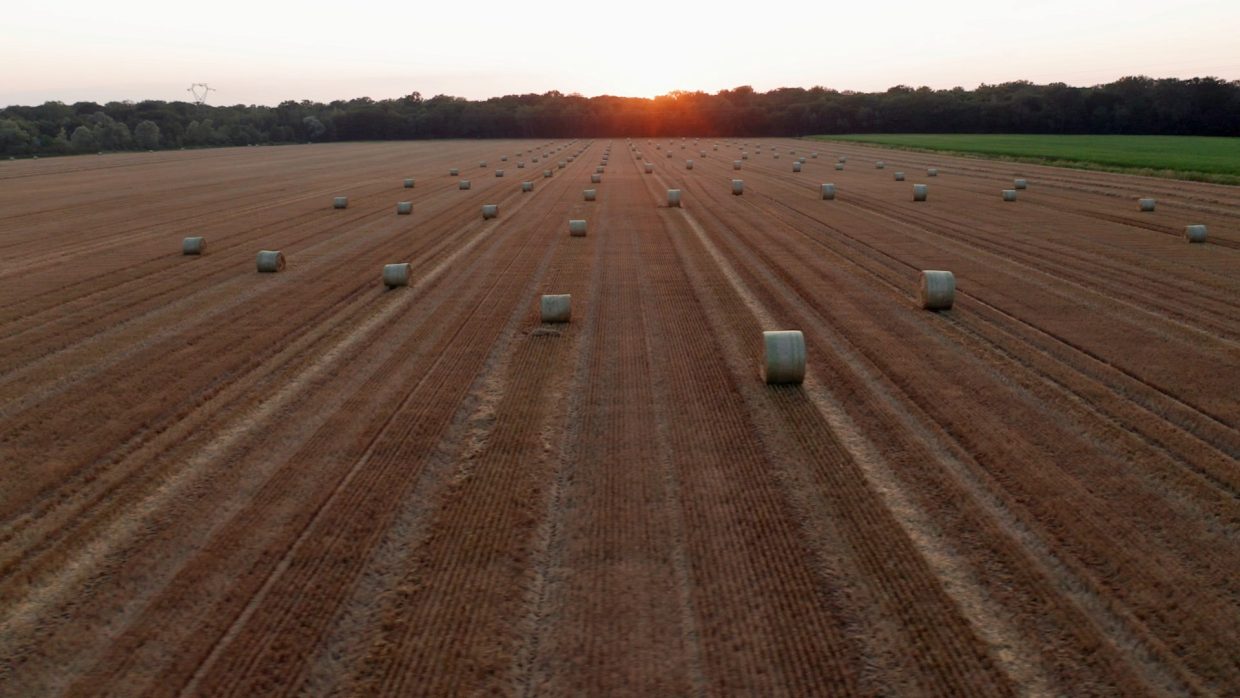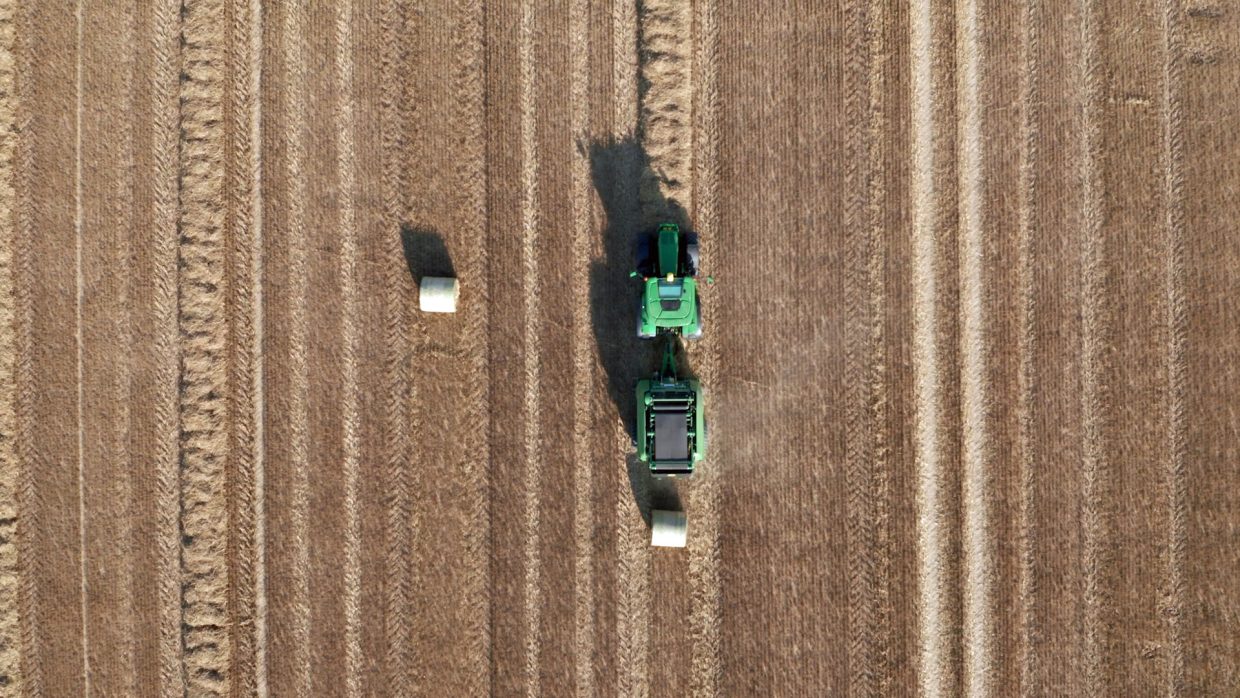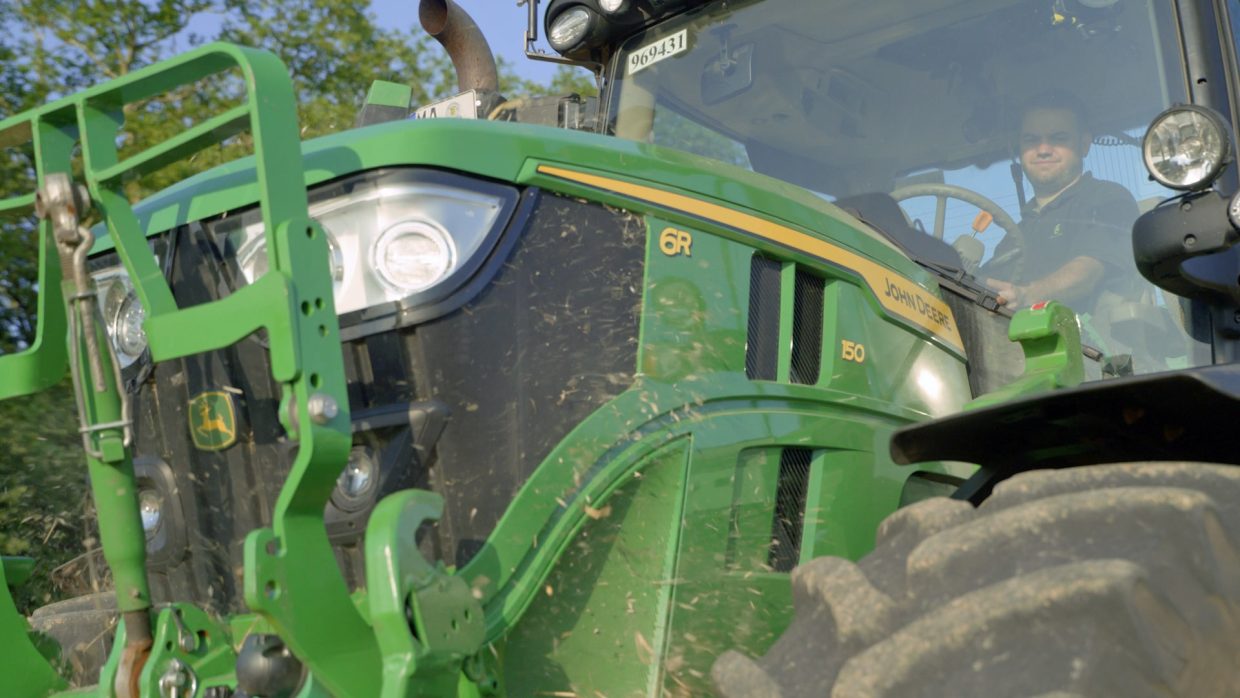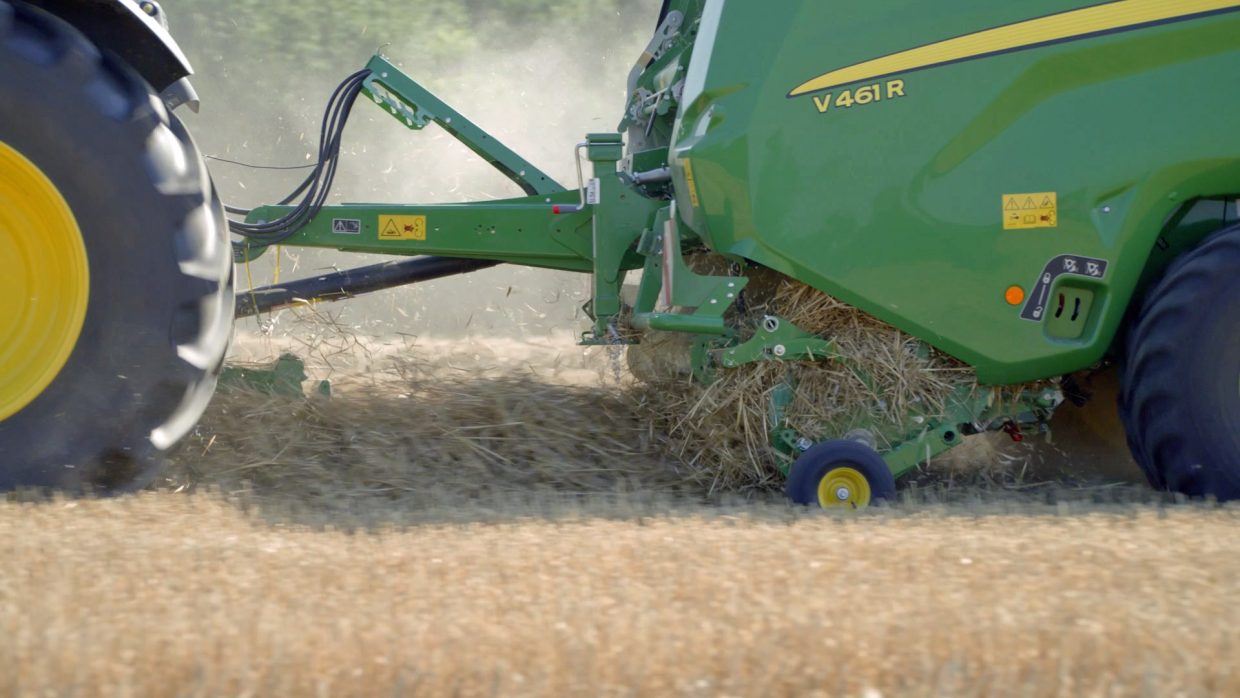In a French field near the John Deere factory in Arc-les-Gray, pulled by a compact yet powerful John Deere 6R150, the V461R fires out a new round bale of straw every 28 seconds. The team is attempting to beat the record set ten years ago for baling straw, by the legendary 6930 tractor, pulling a 990 round baler that achieved 127 bales per hour. The latest tractor and baler combination has become the benchmark for straw bale production, setting a new record.
High productivity with four cylinders
Since then, John Deere engineers have continued to develop tractor technology, producing four-cylinder models that can master tasks requiring high performance, while remaining compact, agile, and economical. Ulrich von Stael, Product Marketing Manager at John Deere, thought it was time to test what a four-cylinder combination can do today. This gave rise to the idea of attempting to set a new record. “We wanted to test, under realistic conditions, how many bales a four-cylinder tractor/baler combination could produce. And whether this combo would be able to beat the record set by a six-cylinder tractor ten years earlier.”
130 bales per hour

Better baling
John Deere balers are fast to bale, easy to operate and built to last, they produce extra high-density bales.
At the end of the record run, 130 clean bales lay in precise rows on the field. A new record was set, surpassing the old one by three bales. But how? Philippe Steinmann, Product Marketing Manager for Mid Tractors at John Deere Europe, explains. “A result like this is always an interaction between baler and tractor. The 6R 150 with its powerful four-cylinder 150-hp engine, capable of 177-hp peak power, plays its part. Making this progress possible is the Intelligent Power Management (IPM), demonstrating its strengths, particularly in work that requires more than just traction.”
The tractor can consistently provide the baler with the power it needs to pick up the straw, and press out well-formed bales. As the IPM makes power available as required, it effortlessly handles peak loads, while also being easier on the farmer’s wallet.
A result like this is always an interaction between baler and tractor.
Philippe Steinmann
For long-term performance, it’s important that the engine is sufficiently cooled. This is especially important while baling straw on a hot dry day, when a cooler can easily clog. To combat this, the tractor reverses the air flow of the engine’s cooling system. If straw and other particles stick to the front grille, the operator can let the tractor “breathe out”, so it can be effectively cooled again.

Productive baler
The record-setting John Deere V461R round baler, “is the benchmark and the most powerful round baler on the market today,” explains Ulrich von Stael. “Most impressive, is its efficient intake system with a powerful pick-up, its high-capacity rotor with a drop floor and fast release system, which is vital for rapid bale ejection.” The quality of the pressed bales shows that the record is not just a number for the gallery. On average, these bales weigh a practical 205kg and have a diameter of 1.3 m.
This record run has shown that a powerful four-cylinder tractor can match and exceed the benchmark performance of a six-cylinder tractor.
Ulrich von Stael
“This record run has shown that a powerful four-cylinder tractor can match and exceed the benchmark performance of a six-cylinder tractor,” says Ulrich von Stael. Philippe Steinmann adds: “Thanks to technical progress, smaller tractors now have quite a bit of power under the hood – and can deliver it when needed.”





